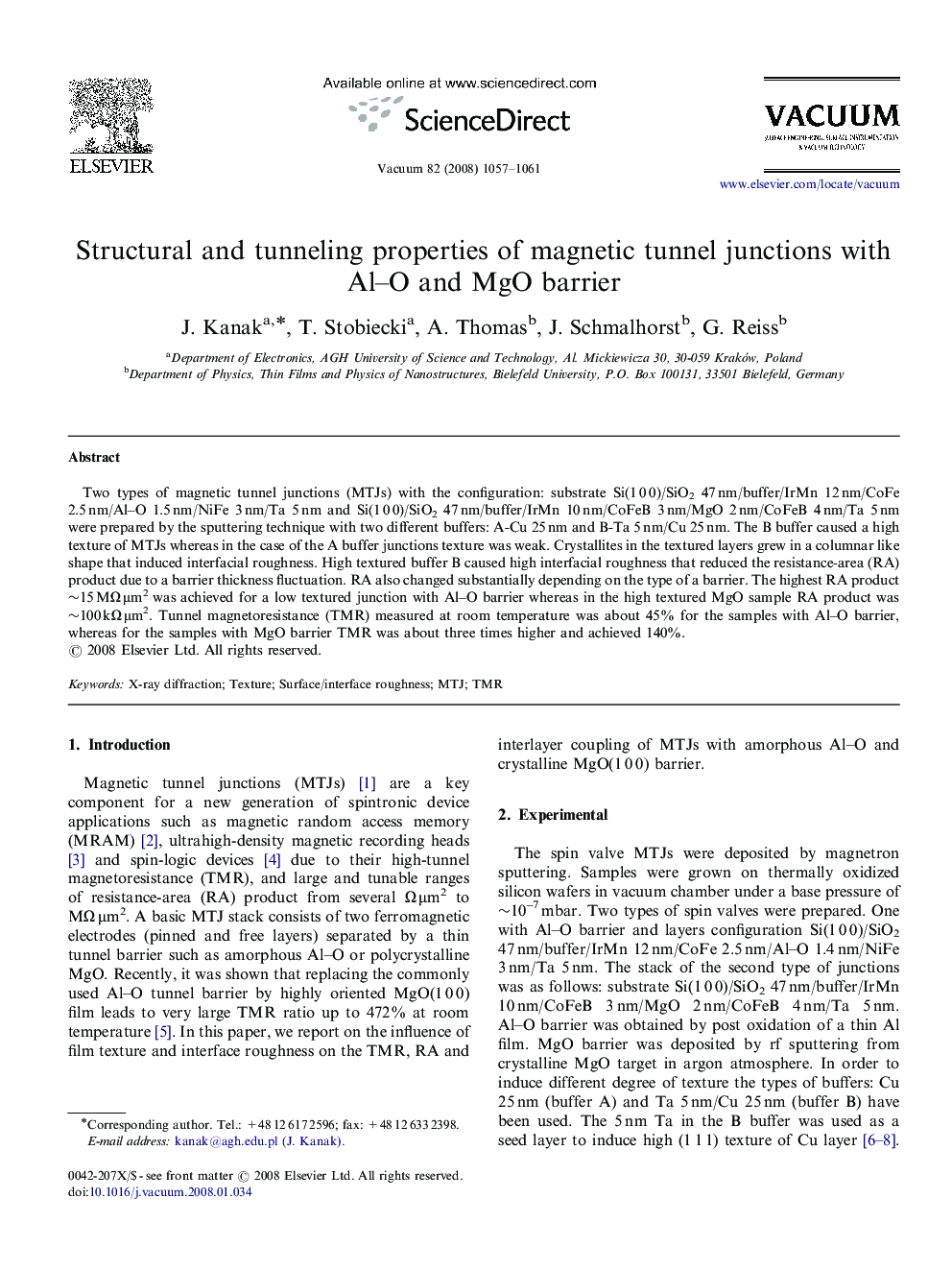| کد مقاله | کد نشریه | سال انتشار | مقاله انگلیسی | نسخه تمام متن |
|---|---|---|---|---|
| 1691307 | 1011308 | 2008 | 5 صفحه PDF | دانلود رایگان |

Two types of magnetic tunnel junctions (MTJs) with the configuration: substrate Si(1 0 0)/SiO2 47 nm/buffer/IrMn 12 nm/CoFe 2.5 nm/Al–O 1.5 nm/NiFe 3 nm/Ta 5 nm and Si(1 0 0)/SiO2 47 nm/buffer/IrMn 10 nm/CoFeB 3 nm/MgO 2 nm/CoFeB 4 nm/Ta 5 nm were prepared by the sputtering technique with two different buffers: A-Cu 25 nm and B-Ta 5 nm/Cu 25 nm. The B buffer caused a high texture of MTJs whereas in the case of the A buffer junctions texture was weak. Crystallites in the textured layers grew in a columnar like shape that induced interfacial roughness. High textured buffer B caused high interfacial roughness that reduced the resistance-area (RA) product due to a barrier thickness fluctuation. RA also changed substantially depending on the type of a barrier. The highest RA product ∼15 MΩ μm2 was achieved for a low textured junction with Al–O barrier whereas in the high textured MgO sample RA product was ∼100 kΩ μm2. Tunnel magnetoresistance (TMR) measured at room temperature was about 45% for the samples with Al–O barrier, whereas for the samples with MgO barrier TMR was about three times higher and achieved 140%.
Journal: Vacuum - Volume 82, Issue 10, 3 June 2008, Pages 1057–1061